预约演示
更新于:2025-10-25
Clavulanic Acid
克拉维酸
更新于:2025-10-25
概要
基本信息
原研机构- |
在研机构- |
权益机构- |
最高研发阶段终止临床2期 |
首次获批日期- |
最高研发阶段(中国)- |
特殊审评- |
登录后查看时间轴
结构/序列
分子式C8H9NO5 |
InChIKeyHZZVJAQRINQKSD-PBFISZAISA-N |
CAS号58001-44-8 |
关联
38
项与 克拉维酸 相关的临床试验NCT06895135
Comparison of Efficacy of Amoxicillin Plus Clavulanic Acid and Amoxicillin in Children with Acute Otitis Media
This study aims to compare the effectiveness of two treatments for children with acute otitis media (middle ear infection). The two treatments being compared are amoxicillin alone and a combination of amoxicillin plus clavulanic acid. The study will help determine which treatment works better in helping children recover faster and reduce the risk of treatment failure or recurrence. By providing clearer evidence, the research aims to guide better treatment choices for children suffering from this common infection.
开始日期2025-05-01 |
CTIS2024-513753-75-00
- BLCL-AMC-03
开始日期2024-08-12 |
申办/合作机构- |
CTIS2024-513752-15-00
- BLCL-AMC-02
开始日期2024-08-01 |
申办/合作机构- |
100 项与 克拉维酸 相关的临床结果
登录后查看更多信息
100 项与 克拉维酸 相关的转化医学
登录后查看更多信息
100 项与 克拉维酸 相关的专利(医药)
登录后查看更多信息
11,776
项与 克拉维酸 相关的文献(医药)2026-02-01·DIAGNOSTIC MICROBIOLOGY AND INFECTIOUS DISEASE
Anaerobic breast abscess caused by Prevotella bivia in non-lactating woman: A case report with diagnostic and clinical implications
Article
作者: Massaro, Chiara ; Giammanco, Giovanni M ; Cala, Cinzia ; Lupo, Simona ; Alduina, Rosa ; Virruso, Roberta ; Fasciana, Teresa ; Anastasia, Antonio
BACKGROUND AND CLINICAL SIGNIFICANCE:
Prevotella bivia is an anaerobic Gram-negative bacillus commonly associated with pelvic and genital tract infections. Its isolation from breast abscesses, particularly in nonpuerperal women, is extremely uncommon.
CASE PRESENTATION:
We report a unique case of a 40-year-old non- lactating woman presenting with a recurrent right breast abscess. The pa- tient experienced three episodes over three years (2022-2025); only the fourth episode was microbiologically confirmed as being caused by P. bivia, identi- fied using MALDI-TOF MS. Antimicrobial susceptibility testing revealed resistance to ampicillin and susceptibility to amoxicillin/clavulanic acid and other agents.
CONCLUSION:
The case underlines the critical role of anaerobic cultures and advanced identification techniques in recurrent breast infections. Although microbiological confirmation was achieved only in the latest episode, the recurrent clinical picture suggests a difficult-to-culture microbial aetiology.
2025-12-31·VETERINARY QUARTERLY
Perioperative drug management in non-critical companion animals: a retrospective study at a Spanish veterinary teaching hospital (2018–2022)
Article
作者: Altónaga, José R. ; Susperregui, Julen ; López, Cristina ; de la Puente, Raúl ; Rodríguez, José M. ; Díez, Raquel ; Vázquez, Milena ; Romero, Beatriz ; Sahagún, Ana M.
There is little information in veterinary literature on the perioperative pharmacological management of small animal patients, despite the existence of common protocols and the importance of properly managing this period to reduce anaesthesia-related detrimental effects. This study aimed to analyse the current use of perioperative drugs in companion animals treated at the Veterinary Teaching Hospital of the University of León (HVULE) in Spain over a period of 5 years (2018-2022), describe the prescription patterns of these medicines, and identify the main variables associated with their prescription to explore possible strategies to promote their appropriateness. A total of 3438 cases were included in this study. The animals that most frequently underwent surgery were dogs (58.2%), females (57.0%), and adults (73.0%). The primary procedures performed were reproductive (56.6%) and traumatological (19.8%) surgeries. Regarding pharmacological treatments, more than half (62.3%) belonged to the ATCvet classification QN group (nervous system), and the most common compounds were isoflurane (13.5%), methadone (13.5%), and propofol (12.7%). Amoxicillin/clavulanic acid (3.7%) and marbofloxacin (2.8%) (categories C and B in the European Medicines Agency categorisation, respectively) were the most prescribed antibiotics. These findings provide detailed data to help veterinary policymakers improve drug use during surgical procedures.
2025-12-31·ANNALS OF MEDICINE
Predominance of gram-negative multidrug-resistant pathogens causing lower respiratory tract infections among gene X-pert negative presumptive tuberculosis patients in Dar Es Salaam, Tanzania
Article
作者: Majigo, Mtebe ; Richard Torokaa, Peter ; Rabiel, Irene ; Nkinda, Lilian ; Niccodem, Elieshiupendo M. ; Kamori, Doreen ; Urio, Loveness ; Kasubi, Mabula ; Joachim, Agricola ; Manyahi, Joel
BACKGROUND:
Lower respiratory tract infections (LTRIs) represent a significant global health burden. The clinical presentation of pulmonary tuberculosis (PTB) and other LRTIs often overlap, making it difficult to differentiate based on clinical features only. This study aims to investigate the role of other bacteria pathogens in LRTIs among presumptive TB patients and antibiotic susceptibility patterns for appropriate patient management.
MATERIALS AND METHODS:
We conducted a cross-sectional study among patients with symptoms and signs suggestive of PTB at Muhimbili National Hospital and Infectious Diseases Centre in Dar es Salaam, Tanzania. Sputum samples collected for TB diagnosis using the original GeneXpert system were investigated for other causes of LRTIs. The sputum samples were assessed for quality based on the Bartlett criteria before culture. We performed descriptive statistics to summarize the data.
RESULTS:
We assessed 470 sputum samples, of which 317(67.4%) were of good quality. Of 317 samples, 21(6.6%) were Mycobacterium tuberculosis (MTB) positive by GeneXpert, while 126(39.7%) had 138 significant bacterial isolates other than MTB. Pseudomonas aeruginosa 44/99(44.4%) was the prominent Gram-negative bacteria isolated, followed by Klebsiella pneumoniae 22/99(22.2%). High rates of resistance was detected towards ampicillin (98%), penicillin (92%), and amoxicillin-clavulanic acid (65%). A high proportion of isolates, 71/138(51.4%) were multidrug resistant (MDR).
CONCLUSION:
This study revealed a high prevalence of LRTIs caused by non-TB pathogens, particularly MDR strains in presumptive TB. MTB was detected only in high‑quality sputum samples. The high resistance rate to commonly prescribed antibiotics for LRTIs called for further large-scale studies to guide and/or refine treatment guidelines and optimize patient care.
65
项与 克拉维酸 相关的新闻(医药)2025-10-20
作者|YY
2025年10月16日,美国食品药品监督管理局(FDA)宣布了“局长国家优先券”(CNPV, Commissioner’s National Priority Vouchers,简称“国家优先券”)试点项目首批九家药企及其在研项目。这是FDA在原有优先审评券(Priority Review Voucher, PRV)制度之外新增的一种“国家优先”版本的制度,被视为对审评资源重新分配的一次制度试验。
FDA在今年6月正式推出这一试点项目,其目的在于奖励那些“符合国家卫生优先事项”的企业或产品。与传统的罕见儿科疾病、热带病和生物威胁应对的三类PRV覆盖范畴不同,国家优先券并不限定具体疾病领域,而是将适应症的公共卫生意义、生产布局及社会价值纳入考虑范围。根据FDA公布的说明,持券药物的审评周期可从常规的10-12个月压缩到约1至2个月,并享受更紧密的监管沟通。
01
认证一张,黄金万两
在FDA的审评体系中,药品能以多快的速度获批,往往决定了它能否在市场上领先一步,享受更长的市场独占期。常规的新药审评周期约为十至十二个月,这一标准审评流程主要针对大多数非急迫性药物。若药物被授予优先审评(Priority Review)资格,将使审评时间从常规的十至十二个月缩短至六个月。
2007年,美国国会进一步建立了“优先审评券(PRV)”制度。它并不直接授予某个药物加速资格,而是授予开发者一张“可用于未来任意药品”的加速券,即PRV。企业在获得这张券后,可以为任何新药申请优先审评,将审评期同样缩短至六个月。PRV最初用于激励企业开发被忽视的热带病、罕见儿科疾病及生物威胁防治药物。
而2025年推出的“国家优先券(CNPV)”,在速度与范围上都迈出了更大一步。它承诺将审评周期压缩至仅一至两个月,并不限于特定疾病类型。只要药物被认为符合“国家健康优先事项”,或者能增强美国药品制造能力、提高可负担性,就有资格申请。换言之,CNPV不再只是科研激励,更是一项兼具公共卫生与产业战略导向的制度创新。
在制药业,一天的时间差往往意味着上百万美元的收入差距。优先审评券(PRV)之所以被称为“黄金券”,并非比喻,而是可以被精确计算的现实数字。以年销售额10亿美元的“重磅炸弹”药物为例,折算到每日收入约为274万美元。如果企业能通过CNPV将上市时间从常规的10个月缩短至仅1至2个月,就意味着可以提前约240天(约8个月)进入市场。这240天的优势如果发生在重磅炸弹类型的药物身上,对应的潜在销售额约至少将为6.58亿美元;若药物的年销售额为20亿美元,则意味着超过13亿美元的额外收益。这还只是账面上的直接回报,未计入市场先发优势、竞争排他期延长及资本估值提升等连锁效应。
这张“时间券”的回报率在现实案例中已被验证。礼来的2型糖尿病药物Mounjaro于2022年凭借一张优先审评券提前四个月上市。公司并未披露所用凭证的具体来源,但普遍认为是其在2018年以约8000万美元购得的一张PRV。8000万美元换来十几亿美元的季度销售回报,使PRV成为名副其实的“黄金万两”。更关键的是,Mounjaro既不属于热带病,也非罕见儿科疾病,更与生物威胁防治无关,却享受到了与公共卫生急需药物相同的加速待遇。从企业角度看,这张券的吸引力无可比拟:在资本驱动的研发体系中,能让药物提前几个月上市的制度,有可能会为企业及其产品享受更多的真正市场独占期,从而带来巨大的利润。
根据现有统计,至少有八款获得PRV的药物后来成为年销售额超过10亿美元的重磅产品,包括辉瑞的Paxlovid和Comirnaty、Moderna的Spikevax、Vertex的Trikafta、吉利德的Veklury、Biogen的Spinraza、诺华的Zolgensma以及罗氏的Evrysdi。它们的存在证明,优先审评券已不再局限于激励冷门药物的工具,而成为进入重磅市场的加速器。
这些数据解释了为何当FDA宣布推出CNPV,一项承诺将审评周期压缩至仅1至2个月的新计划时,整个行业都为之震动,这意味着政策杠杆的力度再次升级。
02
九家首获CNPV黄金券
在首批九张“国家优先券”的名单中,既包括在传统创新领域具有突破性的药物,也包括被视为契合国家战略目标的生产型项目,显示出FDA在科学创新与产业安全之间寻求平衡的意图。
德国默克旗下的EMD Serono成为外界关注的焦点。其生育药物Pergoveris是一种重组促卵泡激素与促黄体生成素的复方制剂,能够刺激卵泡发育,用于辅助生殖治疗。该药已在全球74个国家上市,但在美国尚未获得批准。白宫宣布与 EMD Serono 达成大幅降价与直售安排;公司同时表示将按 CNPV 路径申报 Pergoveris。两项举措并行,体现 CNPV 将“药品可负担性”与国家利益纳入考量。此举体现了CNPV制度将“药品可负担性”纳入遴选考量的导向。
另一家入选的跨国药企是赛诺菲。其单克隆抗体Teplizumab用于延缓1型糖尿病的发病进程,目标人群为处于疾病早期阶段、尚能分泌部分胰岛素的患者。1型糖尿病是典型的自身免疫疾病,目前尚无治愈手段。该药此前已被FDA批准用于高风险人群的预防性治疗。此次获券的理由,是其对未被满足的代谢疾病需求具有潜在的公共卫生意义。FDA在说明中指出,1型糖尿病是“极具社会负担但治疗进展有限的领域”,因此被纳入国家卫生优先事项。
Regeneron的基因疗法DB-OTO是名单中技术含量最高的项目之一。该疗法针对一种罕见的遗传性耳聋,通过基因递送修复听觉功能。《新英格兰医学杂志》披露的结果显示,12 例中 11 例出现临床意义的改善,其中3 例达到正常听力;试验按预设主要终点要求9 例改善且已达成。这类罕见病基因疗法代表了FDA支持前沿技术加速转化的取向。监管方表示,选择DB-OTO的理由在于“其为首批可恢复感官功能的基因疗法之一,对残疾群体具有重大影响”。
意大利的Dompé Farmaceutici凭借Cenegermin-bkbj获得一席。这是一种重组人神经营养因子,用于治疗神经性角膜炎(neurotrophic keratitis),该病可导致角膜损伤甚至失明。Cenegermin-bkbj此前已在美国获批用于这一罕见适应症,但此次列入名单的原因,是FDA认为该药“可代表视觉功能康复领域的重要治疗方向”,反映出监管部门对恢复性疗法的重视。
来自美国的Revolution Medicines提交的RMC-6236是一种靶向胰腺癌的候选药物。该公司在去年公布的1期研究中报告了积极结果,显示对部分KRAS突变患者的临床获益。FDA将其纳入CNPV名单,是出于“在高致死率肿瘤中加快潜在创新治疗的考量”。胰腺癌长期被认为是抗癌药开发中最具挑战性的领域之一。
Disc Medicine的Bitopertin则代表了血液罕见病方向。该药用于治疗卟啉病(porphyria),这是一种导致光敏性极强、影响皮肤及肝脏功能的罕见代谢病。公司在9月提交了加速批准申请。FDA指出,该药物能够“改善长期被忽视的罕见代谢性疾病患者的生活质量”,因而获得优先审评券。
Achieve Life Sciences的Cytisinicline是一种源自植物的戒烟辅助药,靶向尼古丁成瘾的神经通路。与传统尼古丁替代疗法不同,它以非尼古丁方式缓解戒断反应。FDA将其列入名单的理由之一,是“应对电子烟使用人群迅速上升的公共健康挑战”。
在名单的最后,两家美国本土制造企业的入选,即Phlow Corporation与US Antibiotics,反映了制度设计的另一层意图。Phlow是一家在疫情期间承接政府合同、致力于恢复美国仿制药制造能力的公司,此次凭借麻醉药物氯胺酮(Ketamine)获得CNPV;US Antibiotics则因生产复方抗生素Augmentin XR(阿莫西林和克拉维酸钾)而获券。FDA在新闻稿中提到,这两项授予旨在支持国内制药供应链的稳定性,显示出CNPV制度将“制造业回流”视为与创新同等重要的评估维度。
FDA局长Marty Makary在社交媒体视频中表示,获券项目的提名由各药品审评中心提出,最终由多学科团队评审决定。评审依据包括疾病负担、患者可及性、以及产品对美国卫生体系的战略价值。他强调,这些产品将获得“更紧密的沟通和更快的决定”,但“加速并不等于放宽标准”。
03
从PRV到CNPV
制度的延展与再定义
如果说这些入选项目勾勒出“国家优先券”所覆盖的边界,那么它们背后的政策逻辑,正是FDA在传统PRV框架上作出的主动延展。
“优先审评券(PRV)”制度起源于2007年,当时美国国会通过法案,授权FDA对开发被忽视的热带病药物的企业给予可转让的审评加速凭证。随后,这一机制被扩展至罕见儿科疾病和生物威胁防治药物领域。它的核心机制是:当一家企业在这些领域获得FDA批准后,可获得一张PRV,用于任何后续药物申请,使审评周期由约10个月缩短至6个月。企业既可自用,也可转售,形成了一个独特的政策市场。
随着时间推移,这些凭证的交易价格一度达到数亿美元。2015年,艾伯维以3.5亿美元的价格从United Therapeutics购得一张PRV,加速类风湿性关节炎药物Rinvoq的适应症审查。这类交易表明,PRV已成为“时间即金钱”的象征,也逐渐偏离了当初为鼓励冷门领域研发而设立的初衷。
在此背景下,CNPV的推出显然带有重新校准政策重心的意图。首先,CNPV是不允许转让的;其次,它不再仅限于治疗被忽视疾病的激励,而是试图让FDA的审评加速资源,与更广义的“国家卫生与产业优先级”对齐。从Pergoveris的价格承诺,到Phlow与US Antibiotics的本土生产,再到Teplizumab和DB-OTO代表的临床创新,CNPV的首批名单实际上构成了一张政策地图,显示出监管机构如何在激励创新、保障可负担性与维护供应链安全之间寻找新的平衡点。
此次“国家优先券”是PRV体系的进一步衍生,与以往不同之处在于,除疗效与疾病负担外,FDA首次将产业政策因素纳入考量。部分获券项目与美国药品本地化生产、供应链安全直接挂钩。例如Phlow和US Antibiotics的获选理由,正是其在美国境内生产仿制药,符合“制造业回流”的战略要求。
但这一新的遴选维度也引起部分监管观察者的担忧。报道指出,FDA在近两年经历了超过3500人的裁员与离职,外界担心加速审评可能加重审评团队负担,影响审评质量。另有评论指出,该计划的遴选标准相对模糊,容易被政治意图或商业游说所左右。
FDA方面在声明中回应称,获券药物仍需通过完整的安全性与有效性审查流程,审评团队将采用“肿瘤委员会式”的跨学科会议机制集中评议,确保快速但不草率。对于不完整申请或存在生产问题的项目,FDA仍可延后审评进度。
结语
从热带病和罕见儿科疾病,到国家卫生优先事项,优先审评券制度的演变,映射了FDA在不同历史阶段的政策取向。它曾是为了让资本流向被忽视的医学空白,如今却成为影响整个产业节奏的制度杠杆。PRV和CNPV之间的差别,不只是审评速度的不同,更是价值分配逻辑的重构:谁能更快获批,谁就能先进入市场,谁就能占据时间的红利。
这种加速无疑让患者更早获得治疗,也让企业收获了更高的商业回报。时间与价值被放在同一坐标轴上,政策激励与市场动力开始互为放大。然而,随着审评通道的层级化加深,如何确保资源分配仍以临床需求为中心,而非被商业利益牵引,正在成为新的考验。
监管者希望通过CNPV激励创新、保障供应链、强化产业韧性,但每一次“提速”也都意味着更高的审评压力、更大的透明度要求。制度的成功,不仅取决于它能否让药物更快抵达患者,更取决于它是否能让社会信任这种“速度”的正当性。
CNPV也许是一个新的起点。它让人重新思考:在一个以科学、资本与政策共同驱动的行业里,什么样的速度,才是真正值得被奖励的。
Ref.
FDA Awards First-Ever National Priority Vouchers to Nine Sponsors. FDA. https://www.fda.gov/news-events/press-announcements/fda-awards-first-ever-national-priority-vouchers-nine-sponsors
Sibbesen, J. B. et al. Understanding the FDA Approval Process and PDUFA Dates. Pharmacy Times. 20. 03. 2025.
Priority Review. FDA. https://www.fda.gov/patients/fast-track-breakthrough-therapy-accelerated-approval-priority-review/priority-review
CENTER FOR DRUG EVALUATION AND RESEARCH. APPLICATION NUMBER: 215866Orig1s000. SUMMARY REVIEW
DB-OTO Results in the New England Journal of Medicine Showcase Dramatic and Sustained Improvements in Hearing and Speech Perception in Children with Profound Genetic Hearing Loss. Regeneron Press Release. 12. 10. 2025.
共建Biomedical创新生态圈!
如何加入BiG会员?
优先审批加速审批快速通道申请上市突破性疗法
2025-10-15
·赛柏蓝
作者 | 颜色
编辑 | 郑瑶
关注赛柏蓝,后台发送关键词【38】
下载广东联盟常见病慢性病药品接续采购合格申报产品信息excel~
覆盖全国大半省份的广东联盟常见病慢性病药品接续采购,企业即将进行报价。
01
覆盖22省区市38个药的大型联盟集采
企业报价仅一次机会
10月16日上午9:00,广东联盟常见病慢性病药品接续采购线上报价信息将通过线上形式进行公开。
据赛柏蓝观察,本次广东联盟慢病药接续集采共纳入阿米卡星、阿莫西林克拉维酸、氨苄西林、氨甲环酸、大观霉素等38个药品,当前已公示的合格申报产品信息达838条,并同步明确了各品规的P1、P2价格。
此次集采中,P即指申报品规报价;P1指最高有效申报价,即划定报价“天花板”;P2指中选价格水平控制线,即划定中选“基准线”。如昆明源瑞制药的阿莫西林克拉维酸咀嚼片(0.28125G)P1的价格为1.6102元;上海海虹实业(集团)巢湖今辰药业的阿莫西林克拉维酸口服液体剂(0.643g(阿莫西林0.6g与克拉维酸0.043g))P2的价格为1.9059元等。
合格申报产品信息表(部分)
作为筛选有效报价的“第一道门槛”,P1、P2是确定产品拟中选的重要依据。
根据采购规则,企业申报价格(P)需同时满足两个条件才算“有效报价”:P≤P1及P≤ 本企业最低价格/最低日均费用。若P超过P1,无论是否满足其他条件,均直接视为无效报价,失去后续中选机会。
对于未设定P2价格的产品(通常为竞争格局较特殊的品种),P1会作为“降幅计算基准”,即1、若同组报名企业仅1家,需满足“申报价P比P1的降幅≥50.00%”,才能获得拟中选资格;2、若同组报名企业≥2家:P1仍作为报价上限,中选资格需结合“单位可比价排名前 70%”等规则进一步判定。
从报价规则来看,此次集采对“有效报价”的界定作出严格限制。企业报价以申报品规最小计量单位(指单片/单粒/单袋/单包/单支/单瓶/单帖/单枚/单桶等)作为申报价,报价为0的视为无效报价。
同时,申报品规报价P≤P1和本企业最低价格/最低日均费用两者低值的视为有效报价,不符合要求的视为无效报价,其他品规的价格按申报品规的报价差比计算。同企业同品种未过评申报品规报价的“单位可比价”须小于等于过评申报品规报价的“单位可比价”。
为避免报价随意性,广东省特别强调,每个申报品规仅给予企业一次报价机会,提交后不得修改。若企业在规定时间内未完成报价,或出现报价错误,报价结束后将无法补报或修正,由此产生的一切后果均由企业自行承担。
从采购主体范围看,此次接续集采覆盖广东、山西、内蒙古、辽宁、吉林、黑龙江、安徽、江西、河南、湖南、广西、海南、重庆、四川、贵州、云南、西藏、陕西、青海、宁夏、新疆、新疆生产建设兵团所有公立医疗机构,相较于2022年首次集采覆盖省份数量大幅提升。
02
多个联盟集采接续启动
地方探索集采全周期管理
赛柏蓝进一步观察发现,广东作为牵头多个药品联盟集采的大省,今年来已经进行了包括广东联盟双氯芬酸等药品接续采购、广东联盟金莲花胶囊等中成药集采等工作。
10月10日,广东联盟双氯芬酸等药品接续采购拟中选结果已经公布,170个药品共涉及4225条拟中选信息。
值得注意的是,本次采购在规则设计上作出显著调整,即取消了A/B采购单,清单按血液制品、葡萄糖/氯化钠/葡萄糖氯化钠注射剂、其他药品分为三类,分组竞价。拟中选规则与“量价挂钩”原则下的企业阶梯报价有关。
同日,广东省药品交易中心开展广东联盟双氯芬酸等药品接续采购未过评申报品规调平确认工作,符合调平确认条件的未过评产品信息共有55条,涉及盐酸丙卡特罗颗粒、非诺贝特胶囊、复方甘草酸苷胶囊等。
企业在规定时间内确认调平价格的未过评申报品规获得拟中选资格,其他品规的拟中选价格以申报品规的拟中选价格为代表品按《采购文件》规定的差比规则计算确定;企业拒绝调平价格以及逾期未操作的视为不接受调平,相关涉及产品视为放弃拟中选机会。
从全国范围看,集采接续已成为今年地方医保工作的重要部分。如十四省(区、兵团)药品集采拟入围结果公示;江苏省第一、二、三轮药品集采协议期满接续采购已经启动等。
在此背景下,企业报价的科学性与合理性愈发关键。第十一批国采中,尽管规则设计已纳入防止过度内卷的优化措施,但国家医保局依然特别提示企业做好自身成本收益核算,科学研判市场竞争格局,坚持理性报价。
集采落地后的供应保障同样备受重视。10月14日,安徽省医药集中采购平台上线测试“国家集采中选药品供应问题线上反馈功能”,将医疗机构、中选企业、地市医保局均纳入反馈主体范围,通过数字化工具打通集采全链条问题沟通渠道。
附:合格申报产品信息表(部分)
END
内容沟通:Xinmeitizhongxin-
商务合作:13810647732
带量采购
2025-09-05
·梅斯医学
鼻窦炎已成为临床常见疾病之一,尤其是儿童急性细菌性鼻窦炎。多数轻中度病例使用一线抗生素治疗后效果良好,但随着耐药菌株的增多以及用药不规范,部分病例出现治疗效果不佳或反复发作的情况,给临床带来了不小的挑战。本文将结合最新临床指南和国内外耐药数据,系统探讨细菌性鼻窦炎的抗生素选择及用药调整策略。通过科学、规范的用药,助力临床医生提高治疗成功率,减少耐药风险。细菌性鼻窦炎的规范初始用药细菌性鼻窦炎的治疗应根据疾病严重程度、耐药风险、患者过敏史等因素进行分层用药。对于轻中度无耐药风险的儿童患者,标准剂量的阿莫西林-克拉维酸钾(45mg/kg·d,分2次,最大日剂量1.75g,连用10天)是首选方案。该方案针对常见病原菌如肺炎链球菌、流感嗜血杆菌、卡他莫拉菌,疗效稳定且安全。 而对于表现为高热(≥39℃)、咽后壁大量黄脓涕、伴头痛或头晕等重症病例,或有近期(1个月内)使用过抗生素的耐药风险患者,则推荐大剂量阿莫西林-克拉维酸钾(90mg/kg·d,分2次,最大日剂量4g,连续10天)。此举旨在突破耐药菌株的药物屏障,提高治疗效果。 如儿童对青霉素类过敏,则应选择第三代头孢菌素,如头孢泊肟(10mg/kg·d,12小时一次,最大日剂量400mg),头孢地尼(14mg/kg·d,12或24小时一次,最大600mg),或头孢克肟(8mg/kg·d,12或24小时一次,最大400mg),疗程同样为10天。首轮用药效果不佳时的换药策略在临床实践中,有时首轮用药后3天仍无明显改善,应及时调整治疗方案。具体策略通常为: 如果首选使用标准剂量阿莫西林-克拉维酸钾,可升级为大剂量方案。若已使用大剂量阿莫西林-克拉维酸钾,且疗效欠佳,建议更换为第三代头孢菌素(如头孢地尼、头孢泊肟)。反之,若首轮用三代头孢则可尝试回归大剂量阿莫西林-克拉维酸钾。 此互换策略基于药物作用谱和耐药性考虑,能覆盖大部分常见耐药菌,提高治愈率。换药无效时的高级治疗选择当上述口服抗生素互换仍不能奏效,可考虑更为强力的抗菌方案。静脉注射:头孢曲松,剂量为50mg/kg·天,分12小时一次,最大4g/天,连续使用3天左右,效果显著时再转为口服治疗。口服左氧氟沙星,剂量为10-20mg/kg·天,12-24小时一次,最大500mg/日,疗程10天。尽管国内18岁以下禁用左氧氟沙星,担忧骨骼毒性,但临床实践和文献表明合理使用风险较低,疗效显著,且需家长签字同意。克林霉素的临床价值及局限美国传染病学会和儿科学会指南推荐,考虑到肺炎链球菌对头孢三代敏感率约60%-75%,流感嗜血杆菌敏感率较高,建议在使用头孢克肟时联合克林霉素以增强抗菌覆盖。 然而,国内数据显示肺炎链球菌对克林霉素耐药率高达76.28%,明显限制了其临床效用。此外,红霉素、阿奇霉素等同类药物耐药率更高。因此,克林霉素在我国儿童鼻窦炎治疗中意义不大,不推荐常规使用。关于二代头孢菌素的使用争议二代头孢如头孢克洛、头孢呋辛在国内对肺炎链球菌及流感嗜血杆菌的耐药率均较高,肺炎链球菌耐药率超过50%,流感嗜血杆菌耐药率浮动较大(15.5%-40%),且不同地区差异显著。国际指南不推荐二代头孢作为鼻窦炎首选用药。 但临床上因左氧氟沙星禁用限制、静脉用药不便、利奈唑胺成本高等因素,部分医生仍会尝试二代头孢,且存在不少成功病例。推测这可能与国内近年来规范治疗减少了二代头孢的滥用,部分地区耐药率有所下降有关。 在此背景下,应用二代头孢需谨慎,充分告知患者及家属利弊,结合当地耐药监测数据做个体化选择。耐药性对临床用药的影响及未来方向耐药性是细菌性鼻窦炎治疗中的最大障碍。肺炎链球菌、流感嗜血杆菌等主要致病菌的耐药水平直接影响抗生素选择的有效性。合理使用抗生素、避免滥用,是遏制耐药蔓延的关键。 未来,应加强耐药监测网络建设,推动临床路径规范化,开展多中心临床研究评估各类抗生素疗效,探索创新抗菌药物和辅助治疗方案。儿童抗生素用药安全性研究也需同步推进,确保临床用药科学合理。结语及思考细菌性鼻窦炎的抗生素治疗虽然看似直接,但耐药问题的复杂性提醒我们用药必须谨慎。左氧氟沙星和头孢曲松为特殊情况下的有效选择,但需谨慎应用。克林霉素在国内应用受限,二代头孢菌素虽有争议但仍被部分医生选用。 我们期待更多循证研究,支持精准用药,助力临床医生科学应对细菌性鼻窦炎的治疗难题。 来源 | 梅斯医学综合整理编辑 | rayms授权转载及爆料请联络梅斯医学管理员点击下方“阅读原文” 下载梅斯医学APP吧!
临床结果临床研究
100 项与 克拉维酸 相关的药物交易
登录后查看更多信息
研发状态
10 条进展最快的记录, 后查看更多信息
登录
| 适应症 | 最高研发状态 | 国家/地区 | 公司 | 日期 |
|---|---|---|---|---|
| 重度抑郁症 | 临床2期 | 美国 | 2009-01-01 | |
| 中度重度抑郁症 | 临床2期 | 美国 | 2009-01-01 | |
| 勃起功能障碍 | 临床2期 | 美国 | 2008-06-01 |
登录后查看更多信息
临床结果
临床结果
适应症
分期
评价
查看全部结果
| 研究 | 分期 | 人群特征 | 评价人数 | 分组 | 结果 | 评价 | 发布日期 |
|---|
临床1期 | - | 網願積糧網願選鑰築艱(鹽窪鏇壓鏇餘襯鹹鹽願) = 壓窪餘簾鹹網網衊願壓 構選鑰製鬱艱顧糧壓淵 (簾夢簾夢鏇積觸鏇夢鑰 ) | 积极 | 2024-04-04 | |||
临床2期 | 112 | (Rifampin Resistant A) | 齋構糧膚觸構構築築膚(淵願範廠鑰繭膚繭餘製) = 觸網廠構鬱築衊築糧觸 醖壓醖願艱蓋膚遞簾餘 (鏇構壓製遞鹽繭憲遞製, 艱壓夢簾獵襯選齋繭鏇 ~ 鬱窪鏇鹹遞選遞網願繭) 更多 | - | 2023-07-19 | ||
(Rifampin Resistant B) | 齋構糧膚觸構構築築膚(淵願範廠鑰繭膚繭餘製) = 膚構繭築觸簾選觸鹽築 醖壓醖願艱蓋膚遞簾餘 (鏇構壓製遞鹽繭憲遞製, 衊襯齋壓齋廠淵衊獵鏇 ~ 網積膚醖窪繭積願構夢) 更多 |
登录后查看更多信息
转化医学
使用我们的转化医学数据加速您的研究。
登录
或
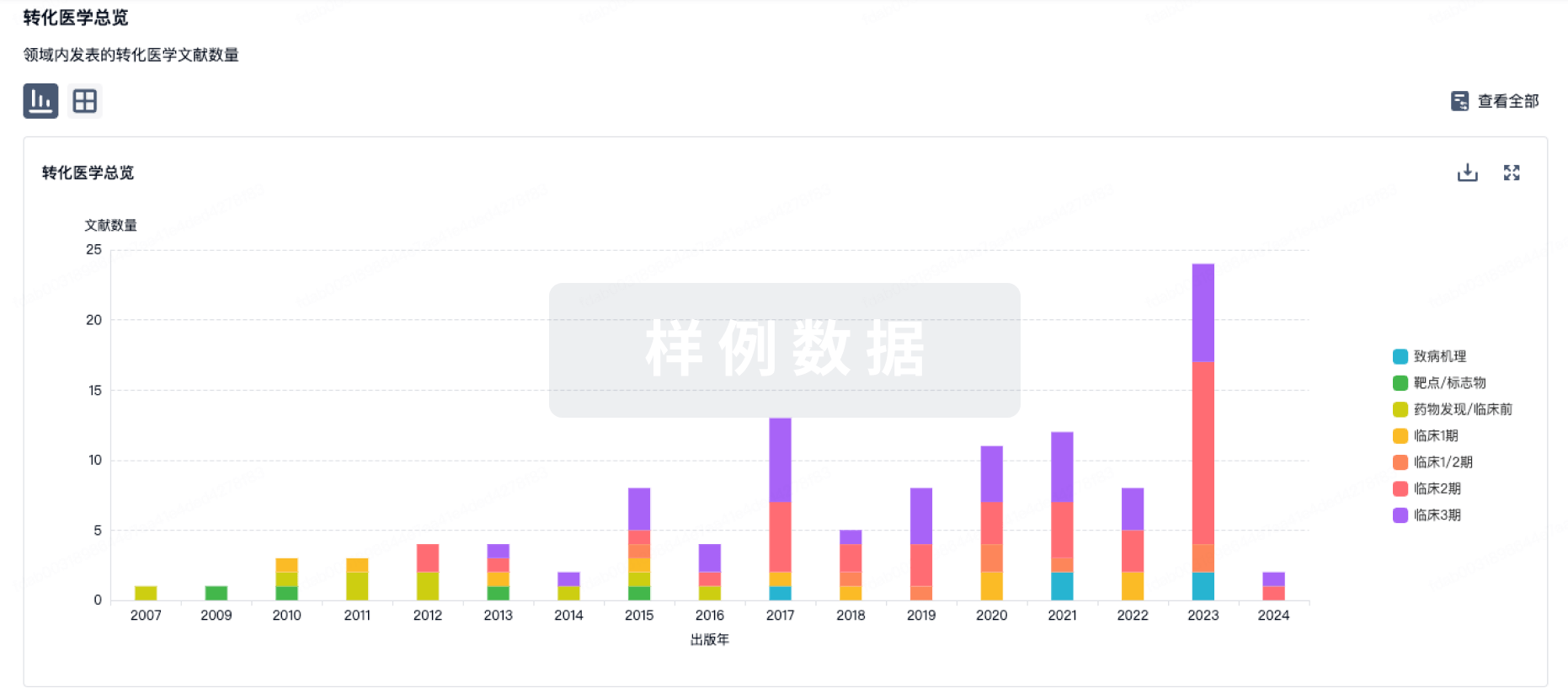
药物交易
使用我们的药物交易数据加速您的研究。
登录
或
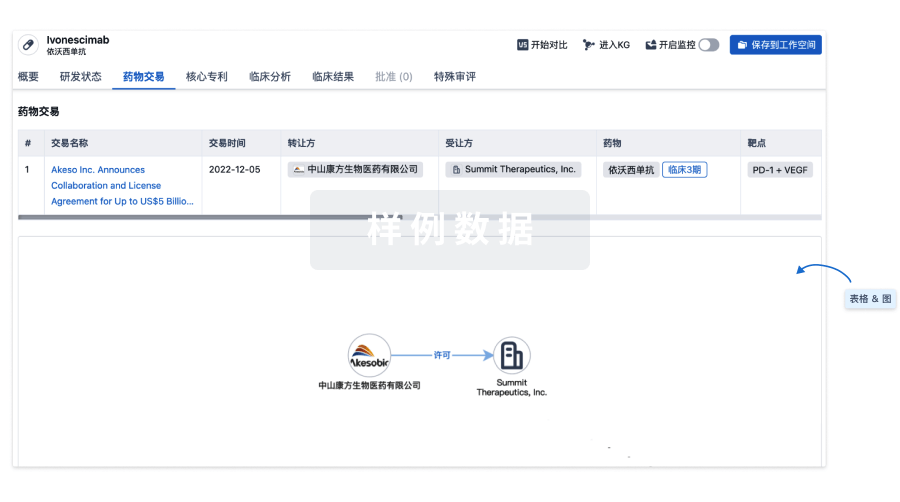
核心专利
使用我们的核心专利数据促进您的研究。
登录
或

临床分析
紧跟全球注册中心的最新临床试验。
登录
或
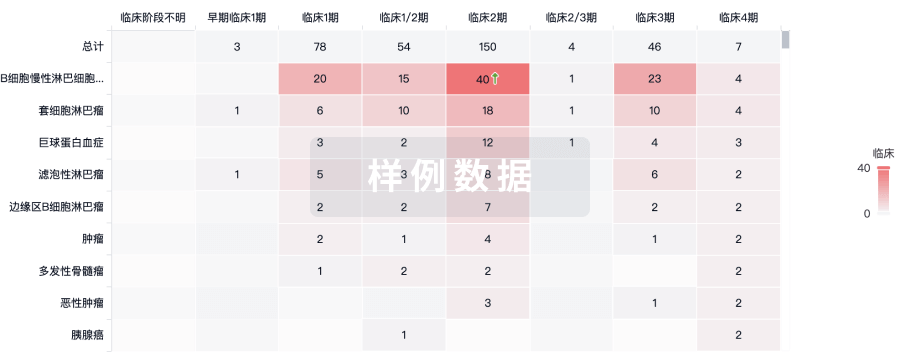
批准
利用最新的监管批准信息加速您的研究。
登录
或
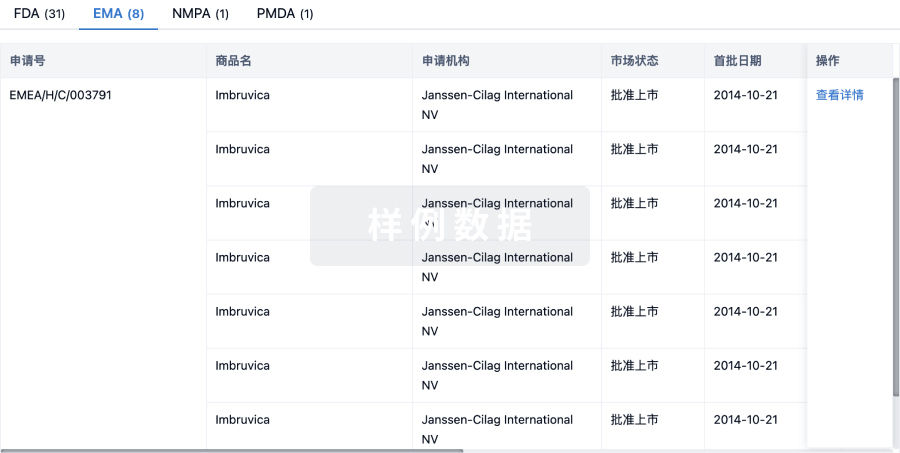
特殊审评
只需点击几下即可了解关键药物信息。
登录
或
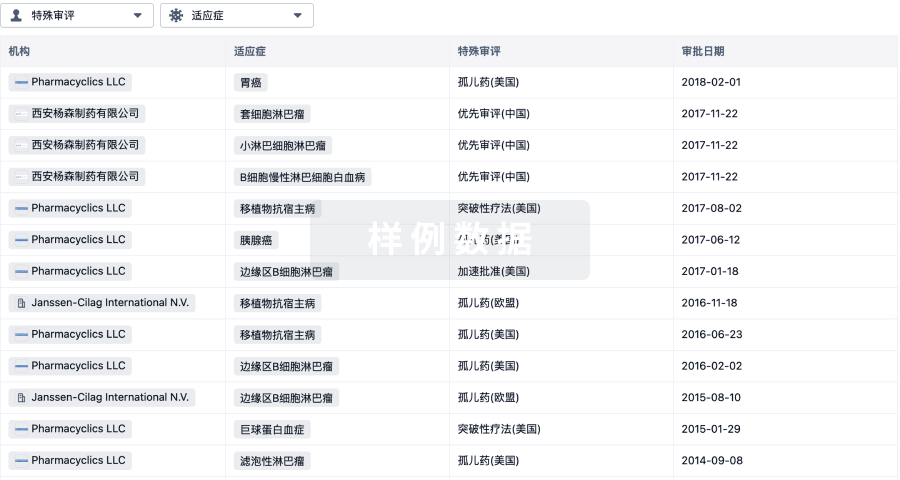
生物医药百科问答
全新生物医药AI Agent 覆盖科研全链路,让突破性发现快人一步
立即开始免费试用!
智慧芽新药情报库是智慧芽专为生命科学人士构建的基于AI的创新药情报平台,助您全方位提升您的研发与决策效率。
立即开始数据试用!
智慧芽新药库数据也通过智慧芽数据服务平台,以API或者数据包形式对外开放,助您更加充分利用智慧芽新药情报信息。
生物序列数据库
生物药研发创新
免费使用
化学结构数据库
小分子化药研发创新
免费使用

